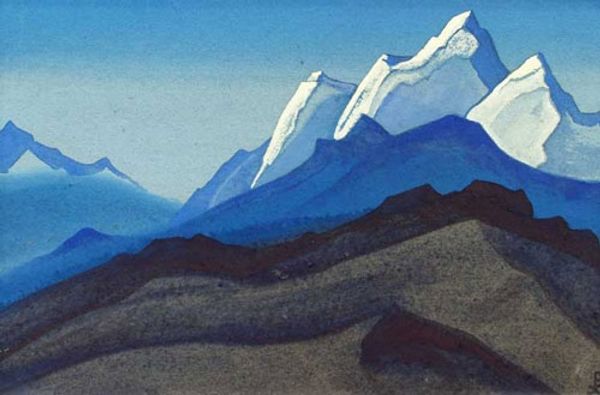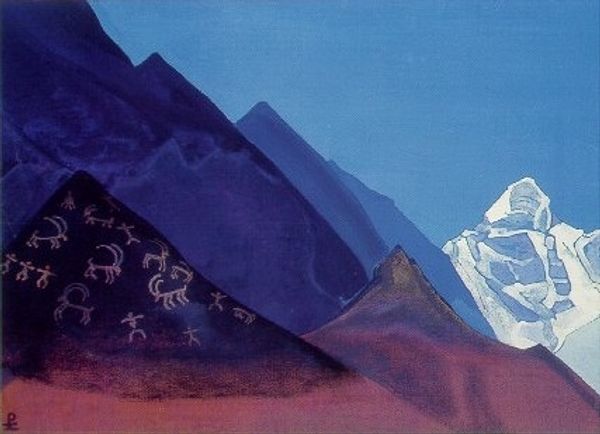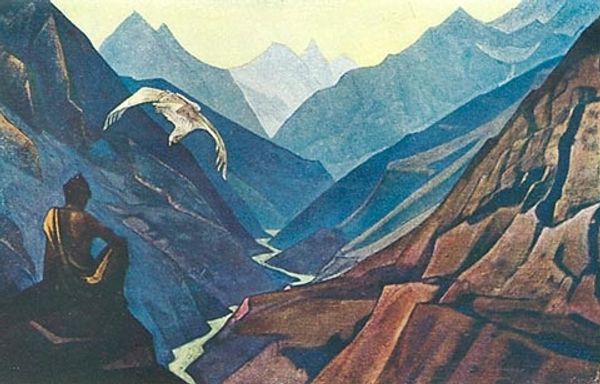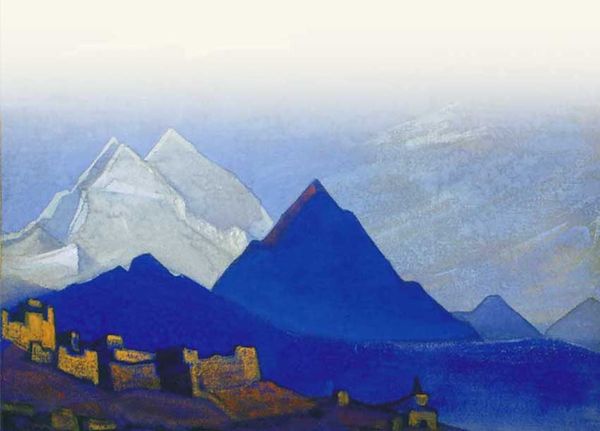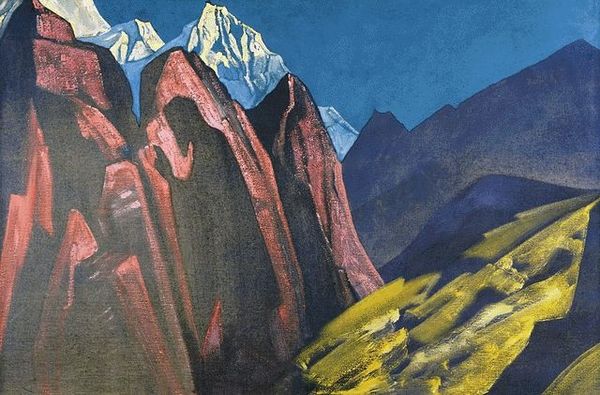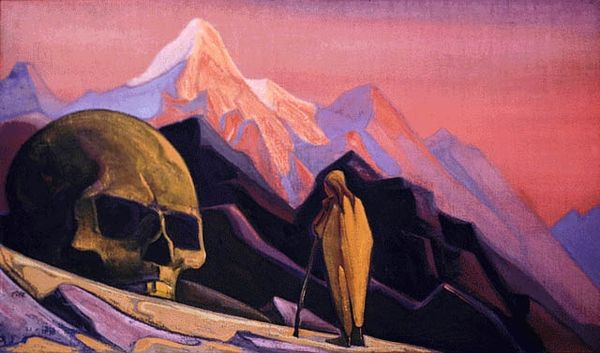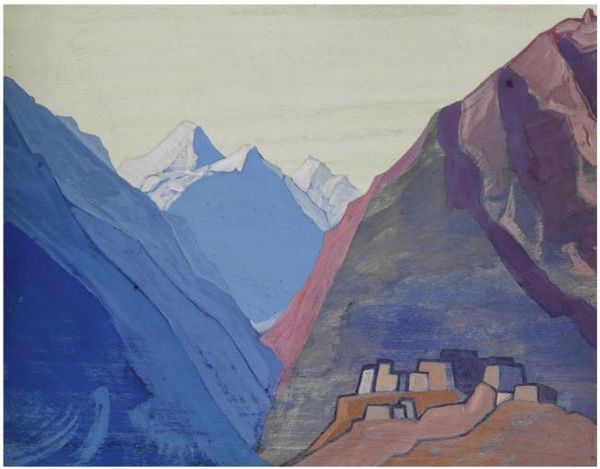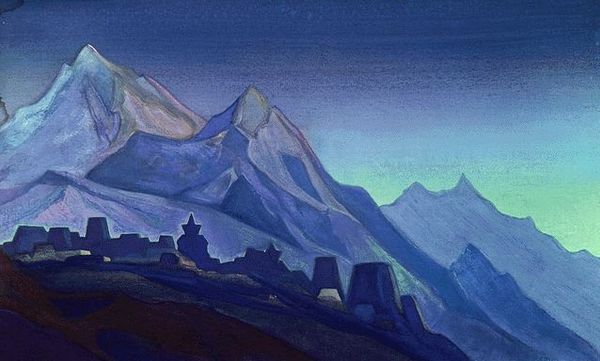
Dimensions: 73.5 x 115 cm
Copyright: Public domain
Editor: Here we have Nicholas Roerich’s “Tsong-kha-pa,” a tempera painting from 1924. It strikes me as a deeply spiritual landscape, dominated by cool blues and whites, except for the orange figure. How might this piece have resonated with the public, considering Roerich's interests and the context of the 1920s? Curator: It’s crucial to remember Roerich was deeply involved in spiritual movements and Theosophy. This work depicts Tsongkhapa, an important figure in Tibetan Buddhism. We should think about the romantic and symbolist movements intersecting with early 20th century interest in Eastern spirituality. It speaks to the politics of imagery and exoticism, while also tapping into a search for transcendental meaning during a period marked by immense social change and disillusionment following the First World War. Do you notice the way Roerich simplifies the mountain forms? Editor: Yes, there's a definite stylization. It almost makes the mountains feel symbolic rather than literal, fitting in with the Symbolist influence you mentioned. Were audiences aware of Tsongkhapa when encountering this painting, or did it serve more to introduce and perhaps romanticize Eastern figures? Curator: It likely did both. While esoteric circles knew of such figures, for the broader public, Roerich’s art probably served as an introduction. Think about how the presentation of such figures might reinforce existing cultural narratives, particularly the Western fascination with the "mysterious East." The act of representation itself carries political weight. How might museums today present a work like this to address these concerns? Editor: Museums might contextualize it within both Roerich’s biography and the broader history of Orientalism, acknowledging the potential for misrepresentation and encouraging a more nuanced understanding. I'm starting to think about how this image participates in complex cultural exchange, for better or worse. Curator: Exactly. It’s never a one-way street. The painting’s journey and reception also reveal evolving Western attitudes towards spirituality and other cultures. This wasn't simply a portrayal; it was an intervention within a specific social landscape.
Comments
No comments
Be the first to comment and join the conversation on the ultimate creative platform.
